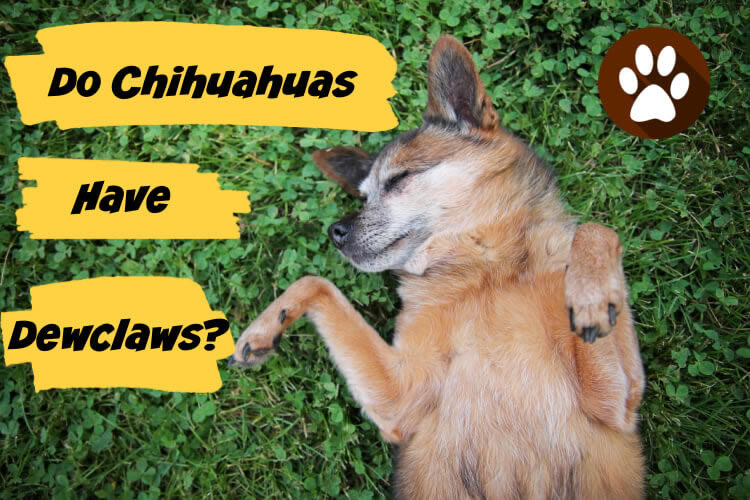
Ever wonder if Chihuahuas have dewclaws? You can always check your Chihuahua’s paw pads. A quick visual observation will reveal whether he has dew claws, and if so, how many he has. Unless you’re familiar with these special digits, though, you won’t know where to look.
What Are Dewclaws?
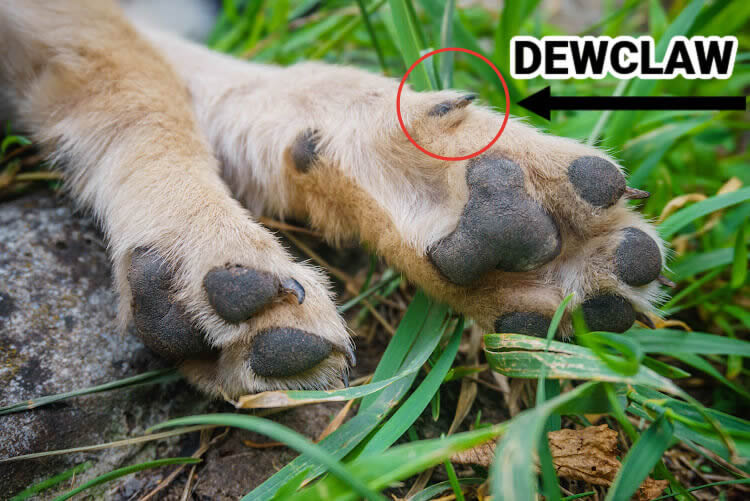
A dewclaw is a digit — a toe, nail and supporting structures — on the bottom of a dog’s paw pad that sits higher and closer to the dog’s body than the other nails. It’s the equivalent of a thumb. Just like our thumbs are positioned high and on the inner side of our hands, so are a dog’s dewclaws.
Dewclaws receive their namesake from their ability to knock dew off the grass. They typically don’t touch the ground. Dewclaws are higher than the other digits on a dog’s paw pads where they are able to brush the sides of grass blades when the dog walks.
What Are Double Dewclaws?
Double dewclaws refers to the presence of both front leg and hind leg dewclaws. Most dogs have a single dewclaw on each of their front legs. There are some dogs, however, that have dewclaws on their hind legs as well.
These are double-dewclawed breeds. They still have dewclaws on their front legs, but double-dewclawed breeds have dewclaws on their hind legs as well. Double-dewclawed breeds may have a single dewclaw per hind leg, or they may have two dewclaws per hind leg. Regardless, all double-dewclawed breeds have dewclaws on the paw pads of their hind legs.
Double-dewclawed breeds include the following:
- Anatolian Shepherd
- Basenji
- Beauceron
- Briard
- Catahoula Leopard Dog
- Catalan Sheepdog
- German Shepherd
- Great Pyrenees
- Icelandic Sheepdog
- Norwegian Lundehund
- Saint Bernard
- Spanish Mastiff
They may look the same, but front leg dewclaws and hind leg dewclaws are anatomically different. Front leg dewclaws are typically attached by bone and muscle, whereas hind leg dewclaws are typically attached by only soft tissue. Because they are attached by bone and muscle, dogs have more strength and flexibility in their front leg dewclaws.
What Do Dogs Use Their Dewclaws For?
Dewclaws, especially hind leg dewclaws, are largely functionless. Most dogs rarely or never use them. Whether they want to scratch an itch, dig a hole or run in circles, dogs will typically use their other four digits. But there are still instances in which dogs may use their dewclaws.
Some dogs use their dewclaws to hold things. Because it’s high and on the side of the paw pad, the dewclaw will wrap around objects. Dogs can essentially hold small treats and toys in their paws using this special digit.
Some dogs use their dewclaws to stabilize themselves when traversing uneven terrain. Dewclaws normally don’t touch the ground. When a dog is going up or down a hill, however, his dewclaws may dig into the side of the hill to stabilize him.
Dewclaws also provide stability when turning at fast speeds. For a brief moment when turning, the dog’s dewclaws will touch the ground. With all five digits touching the ground, he will be able to turn more easily and without falling over.
Dogs in cold climates may use their dogs to increase traction with ice and snow. Retrievers may pull themselves out of the water and onto the ice- or snow-covered ground using their dewclaws. Other cold-climate breeds like the Great Pyrenees and Iceland Sheepdog may dig their dewclaws into ice and snow so that they don’t slip.
Do Chihuahuas Have Dewclaws?
Chihuahuas have dewclaws. With the exception of the African wild dog, nearly all dogs are born with dewclaws.
The Chihuahua isn’t a double-dewclawed breed. While Chihuahuas are born with dewclaws, they only have these special digits on their front leg paw pads.
You can find your Chihuahua’s dewclaws by inspecting his front leg paw pads. Each of his front leg paw pads should have a single dewclaw that’s positioned about 1 inch high on the inner side. Your Chihuahu’s dewclaw nails will likely be thinner and smaller than his nails.
Why Chihuahuas Have Dewclaws
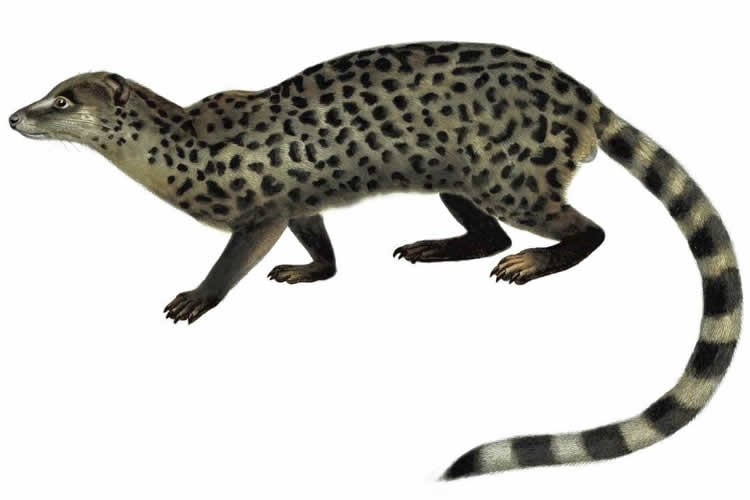
Chihuahuas have dewclaws for the same reason that other dogs have them: it’s an anatomical feature that’s rooted in their evolutionary history.
Contrary to popular belief, the evolutionary history of Chihuahuas didn’t begin with wolves. There was a small carnivorous mammal that came before long before wolves. Known as the miacis, this cat-like mammal roamed the Earth roughly 65 million to 33 million years ago. Evolutionary evidence suggests that all caniforms — wolves, dogs, bears, foxes, raccoons and other dog-like carnivorans — evolved from the miacis.
The miacis didn’t hunt like the modern-day wolf. Rather than chasing prey on the ground, it would chase prey up trees. The miacis had five retractable claws per paw pad, which it used to quickly climb up trees in pursuit of prey. Some of the earliest members of this cat-like mammal actually lived in trees.
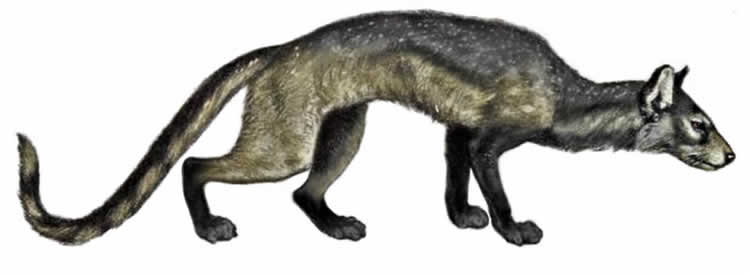
The miacis evolved into a ground-dwelling mammal known as the cynodictis. The transition from living in trees to living on the ground led to some evolutionary changes. While the miacis had cat-like features, the cynodictis had dog-like features. The cynodictis is believed to be one of the first if not the first true dog.
The cynodictis was a digitigrade animal, meaning it walked on its toes while keeping its heels raised off the ground. Evolution pushed its legs forward, allowing it to run faster on the ground by striking its toes. With a raised heel, the fifth claw of the cynodictis and its canine descendants no longer touched the ground, thus becoming dewclaws.
After a few more evolutionary steps, dogs emerged. Dogs share many of the same characteristics as the cynodictis, including carnassial teeth, a long muzzle and a raised fifth claw. The term “dewclaw” was coined in the mid- to late-1500s to describe this now-raised digit on dogs and other animals.
Chihuahuas have dewclaws because, like all dogs, they are modern relatives to the cynodictis and miacis. The miacis was tree-dwelling, so it used its fifth claw to climb trees. When the miacis evolved into the ground-dwelling cynodictis, it no longer needed to climb trees. Evolution made the cynodictis a digitigrade animal by raising its heel so that its fifth claw no longer touched the ground.
Why Some Dogs Don’t Have Dewclaws
Not all dogs have dewclaws. While most are born with these special digits, some dogs have their dewclaws surgically removed.
Breeders may get their puppies’ dewclaws removed to protect them from future injuries. Dogs are more likely to injure their dewclaws than their other digits. Dewclaws don’t touch the ground, so dogs may snag their dewclaw nails on objects when running and playing.
Breed standards may not allow dewclaws. The American Kennel Club (AKC) breed standard for the Portuguese Water Dog, for instance, says the hind legs must not have dewclaws; Portuguese Water Dogs can only have front leg dewclaws if owners want to register and compete them in the show ring.
The AKC breed standard for the Great Pyrenees, on the other hand, requires double dewclaws. Owners can’t get their Great Pyrenees’ front or hind leg dewclaws surgically removed if they want to register and compete them in the show ring.
Dogs may get their dewclaws surgically removed because of an injury or disease. If a dog has a cancerous tumor, such as a subungual squamous cell carcinoma tumor, under his dewclaw nail, the veterinarian may remove his entire dewclaw. Alternatively, if a dog has a severely injured or infected dewclaw, the veterinarian may remove it.
Is Dewclaw Removal Safe?
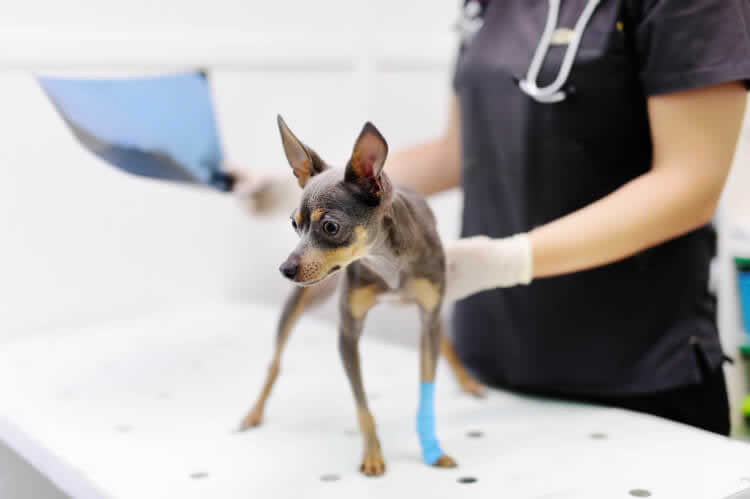
Dewclaw removal is a controversial topic. When performed by a licensed veterinarian, it’s typically a safe procedure. The veterinarian will anesthetize the dog, followed by amputating his dewclaws. But all surgical procedures carry a risk of complications.
Dogs may develop an infection at the incision site, or more rarely, they may experience cardiac arrest or a stroke from the anesthesia. Even without complications such as these, dogs may experience pain after getting their dewclaws removed.
While some breeders opt for dewclaw removal surgery to protect their puppies from future injuries, dewclaw injuries aren’t very common. They typically involve working dogs that have been bred for a specific purpose, such as herding livestock or hunting wild game. Working dogs may snag one of their dewclaws while performing the task for which they were bred, resulting in injury.
Most companion dogs, including Chihuahuas, will never sustain a dewclaw injury. Unlike their working counterparts, they don’t have a job to perform. Instead, companion dogs are pets that provide company and companionship. Because they spend most of their day lounging near their owner, companion dogs are less likely to injure their dewclaws than working dogs.
Dewclaw removal may actually increase the risk of injury. According to a study published in the “Journal of the American Veterinary Association (JAVMA),” front leg dewclaw removal is a risk factor for injuries involving other digits.
Front leg dewclaws are connected by bone and muscle, making them more functional than hind leg dewclaws, the latter of which are connected only by soft tissue. When a dog’s front leg dewclaws are removed, more stress will be placed on his other digits, thereby increasing the risk of injury to those other digits.
Many veterinarians will only recommend the removal of a dog’s front leg dewclaws if there’s a valid medical reason for doing so, such as a cancerous tumor. It’s a more invasive procedure than hind leg dewclaw removal. The veterinarian will have to cut through bone and muscle during a front leg dewclaw removal procedure.
Hind leg dewclaws are more loosely attached, so veterinarians can remove them more easily. This procedure is particularly simple when performed on puppies around three days after birth.
Caring for Your Chihuahua’s Dewclaws

If your Chihuahua has dewclaws — which he should unless they were removed — you’ll need to care for them. Dewclaw injuries are rare, but they can still occur.
You’ll need to trim your Chihuahua’s dewclaws. Dewclaws grow just like all other nails. Since they rarely make contact with the ground, though, they won’t wear down as quickly as your Chihuahua’s other nails. Neglecting to trim them regularly may result in them becoming ingrown. Just remember to watch out for the quick.
Dewclaws have a quick. The quick is the section of a nail that’s nourished with blood. Cutting into the quick of a dewclaw nail or any other nail will create a painful, infection-prone wound.
Dewclaw nails can break or splinter open. Assuming the break is shallow, you should be able to trim it down with a pair of canine nail clippers. If the dewclaw nail is broken deep into the quick, conversely, you should seek veterinary attention.
Signs and symptoms of a broken dewclaw nail include:
- Licking the affected paw pad
- Yelping or pulling away when you attempt to touch the affected paw pad
- Limping while walking
- Swelling and redness
- Bleeding (if the break is deep into the quick)
If your Chihuahua burrows under blankets, you should keep an eye on him to ensure that he doesn’t snag his dewclaws. A snagged dewclaw may sound harmless, but it can lead to a more severe injury.
Your Chihuahua may attempt to pull his paw away after snagging his dewclaw in a blanket. Assuming it’s stuck, he will inadvertently stress the problematic dewclaw. To protect him from injuries like a broken toe or torn ligament, you’ll need to help your Chihuahua free his dewclaw from the blanket. Hold your Chihuahua’s paw pad with one of your hands while using your other hand to unsnag his dewclaw.
In Conclusion
Like most dogs, Chihuahuas have dewclaws. They are born with one of these raised digits on each of their front legs. You can care for your Chihuahua’s dewclaws by following the tips listed here.
References:
https://lifewest.edu/lifelines/stabilization-of-the-canine-dewclaw/
Does your Chihuahua have dewclaws? Let us know in the comments section below!